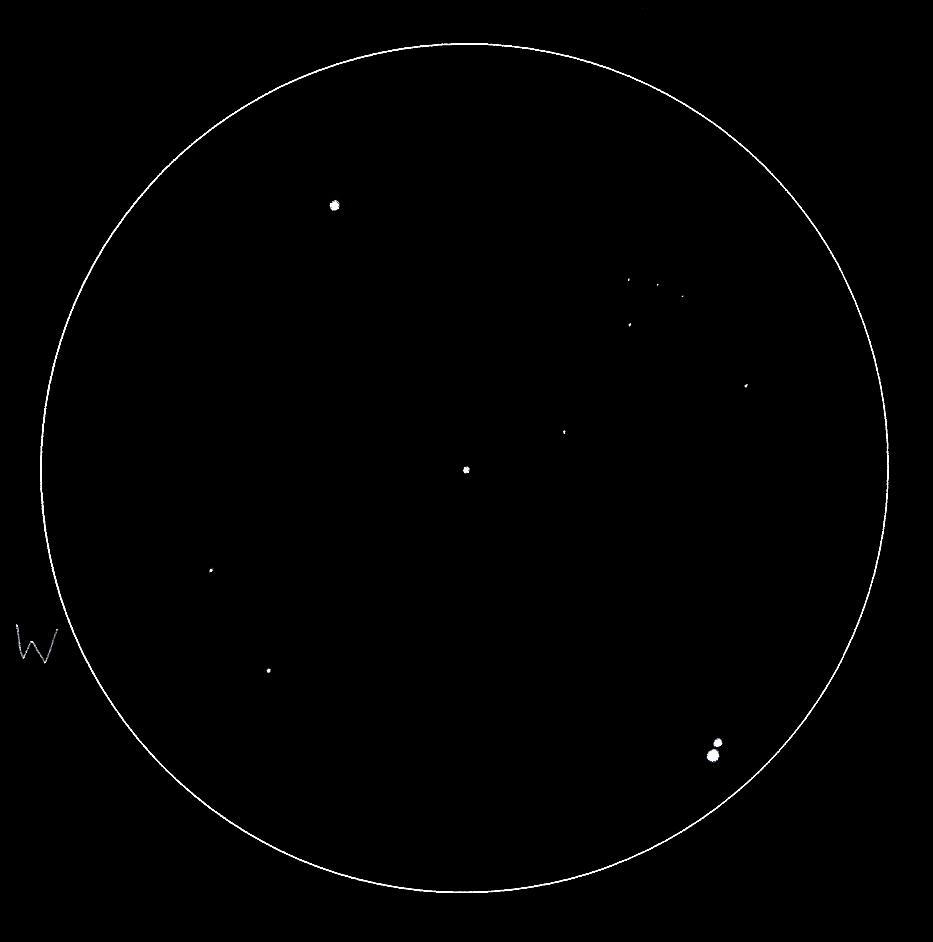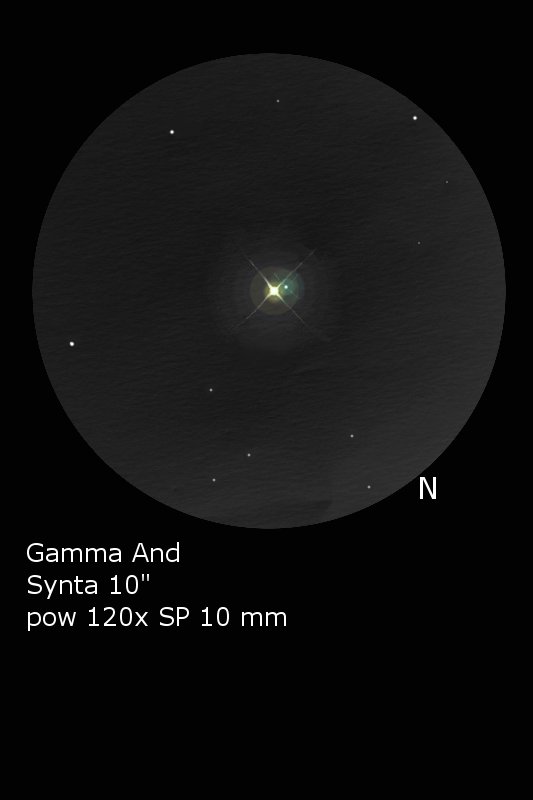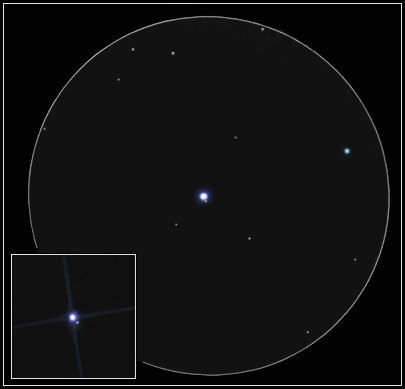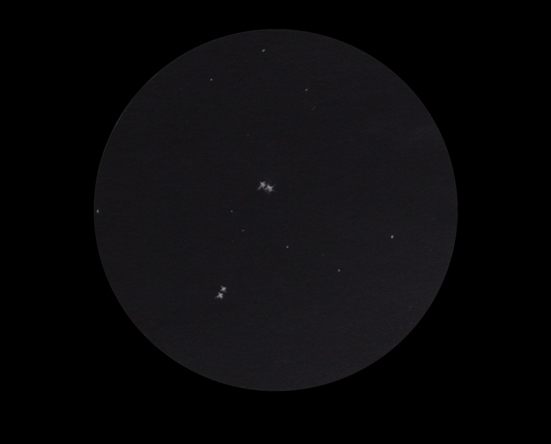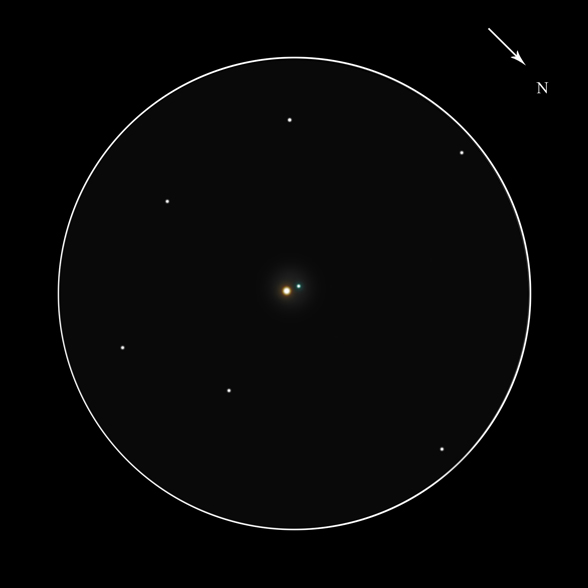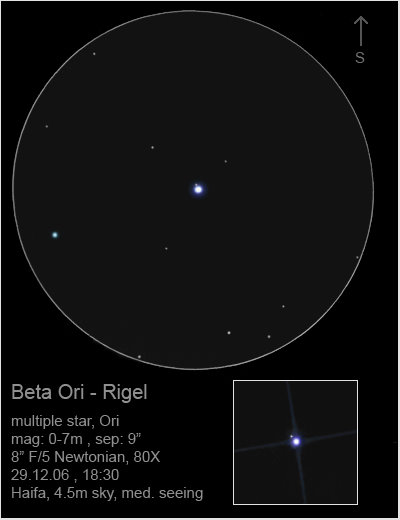Orion’s Sword: NGC 1980, Messier 42 and 43, NGC 1977, NGC 1981
Sketch and Details by Peter Mayhew
Move cursor over image to view labels.
Location: York, UK
Date: 17th January 2010
How do you do justice to Orion’s sword? Whilst photography can reveal what the eye cannot see, it cannot easily record what the eye does see. Here is my attempt at the winter showpiece of the Northern skies. The more you linger and let the photons work over your retina, the more shades of grey and ripples of dark and light emerge: the scene really sucks you in. The sketch covers two degrees of arc top to bottom, and I viewed through a 25mm eyepiece on my Skywatcher Skyliner 152mm f8 Dobsonian, which gives a field of view of about half the sketch. The sketch was done in graphite pencil on white paper at the eyepiece and then scanned and inverted. Labels added later.



